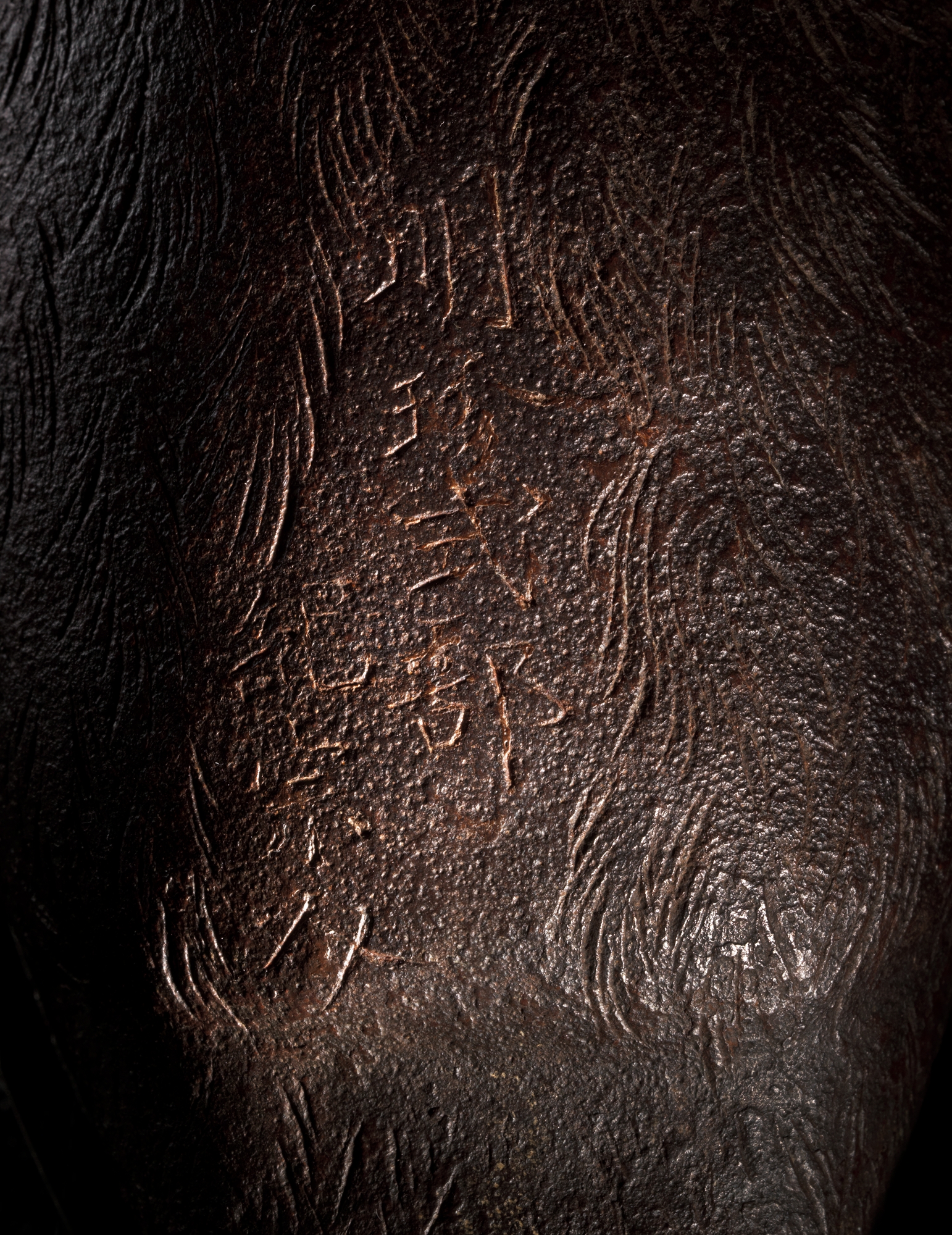Okimono in the Form of a Raven
Myōchin Munesuke Japanese
Not on view
This raven was fashioned by hammering and embossing steel––a most intractable medium––into a being of remarkable vitality. Though motionless, the bird is caught in a lifelike pose and full of expression. The conspicuously large size and shape of the beak distinguishes it from a crow. It was designed as an okimono, or ornament for display in the ceremonial alcove (tokonoma) of a Japanese reception room. Because of its large size and fine quality, we may imagine this work was commissioned for a wealthy daimyo patron.
The work is signed "Myōchin Shikibu Ki no Munesuke" on the underside of the body. This refers to the twenty-second master metalsmith to use this name (beginning in the twelfth century), who was active in Edo (present day Tokyo) in the early eighteenth century. This Munesuke, a noted maker of ornate helmets and armor, was known as one of the greatest masters of metal repoussé (hammered shapes). While the majority of works signed Munesuke created over the centuries are not accepted as genuine, Bashford Dean, the founder of the Metropolitan’s Department of Arms and Armor, after careful comparative research, wrote in 1918 that this work represents the finest quality repoussé metalwork of the early eighteenth century.
The work was once a prized possession of Edouard Mène, a noted French collector of Japanese ironwork, and in the late nineteenth and early twentieth centuries was put on display at the museums Guimet and Cernuschi and elsewhere in Paris.
Due to rights restrictions, this image cannot be enlarged, viewed at full screen, or downloaded.
This artwork is meant to be viewed from right to left. Scroll left to view more.




